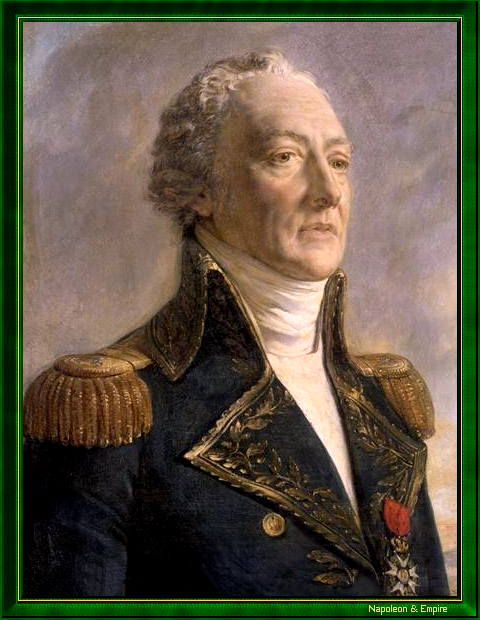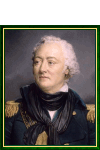Louis René Madeleine Levassor de La Touche, a.k.a. Latouche-Tréville
Count de Tréville
Pronunciation:

Louis-René-Madeleine Le Vassor de La Touche, Comte de Tréville, was born into a family of sailors - his father was a lieutenant-general in the naval armies - on June 3, 1745, in Rochefort, on the Charente coast. Enlisted at an early age, he experienced his baptism of fire at the age of fifteen at the battle of Les Cardinaux, on November 20, 1759, in Quiberon Bay.
After an interlude in the cavalry from 1768 to 1776, he returned to the navy. He distinguished himself with a brilliant campaign in 1780-1781 during the American War, when he was entrusted with transporting funds for the American insurgents.
On his return, he was promoted to director of the port of Rochefort, deputy director of ports and arsenals, then inspector general of gunners in 1786, as well as chancellor to the duc d'Orléans.
A noble deputy to the Estates-General, he soon tired of politics and returned to the navy. Rear-admiral in 1793, he led a division of Laurent Truguet's squadron on the Sardinian expedition. Arrested under the Terror because of his noble origins, he was reinstated in 1795 with command of a division of the Brest squadron.
In July 1801, the First Consul Napoleon Bonaparte entrusted him with the Boulogne flotilla, and he succeeded in preventing Horatio Nelson from breaking his embossing lines (mooring a ship fore and aft so as to make it fixed).
He was then entrusted with one of the squadrons of the Saint-Domingue expedition. There, he supported the operations of general Charles Victor Emmanuel Leclerc and captured Port-au-Prince.
Back in France in 1803, he was promoted to vice-admiral and given command of the Mediterranean squadron. Napoleon knew what he was doing when he entrusted this exceptional sailor with the task of organizing naval maneuvers in preparation for a landing in England.
He was hard at work on this plan when, already exhausted, he died of exhaustion on August 19, 1804 aboard his flagship, the Bucentaure, in Toulon harbor.
This loss deprived the French navy of a rare naval intelligence, and had disastrous consequences for France. To replace him, Denis Decrès, Minister of the Navy, had no better idea than to appoint Pierre-Charles de Villeneuve, who would lead the French fleet to the tragedy of Trafalgar...
Buried with full honors, Latouche-Tréville lies in the military cemetery on the heights of Saint-Mandrier. His pyramid-shaped tomb overlooks the cemetery and keeps an eye on the sea.
"Louis René Madeleine Levassor de La Touche-Tréville, Vice-Admiral in 1803" by Georges Rouget (Paris 1783 - Paris 1869).

According to Emmanuel de Las Cases: Napoleon greatly regretted Latouche-Tréville; he alone had presented him with the idea of a true talent; he thought that this admiral could have given a different impetus to affairs. The attack on India, the attack on England, would at least have been undertaken, and perhaps accomplished
.
A great officer of the Empire, his name - simplified to "Latouche" - is inscribed on the third column (north pillar) of the Étoile triumphal arch. To pay tribute to this man, sadly forgotten by the general public, the French navy named an aviso, a cruiser and a frigate after him.
Freemasonry: Louis René Madeleine Levassor de La Touche-Tréville was a member of the lodge "Les Disciples d'Héredom" from the Orient of Montargis. List of naval battles of the Wars of the Revolution and the EmpireAcknowledgments
This biographical notice (with the exception of the paragraph on Freemasonry) was written by Mrs. Marie-Christine Pénin (see her website Tombes et Sépultures), and put online with her kind permission.Other portraits

"Louis René Madeleine Levassor de La Touche-Tréville, Rear-Admiral in 1792" by Georges Rouget (Paris 1783 - Paris 1869).